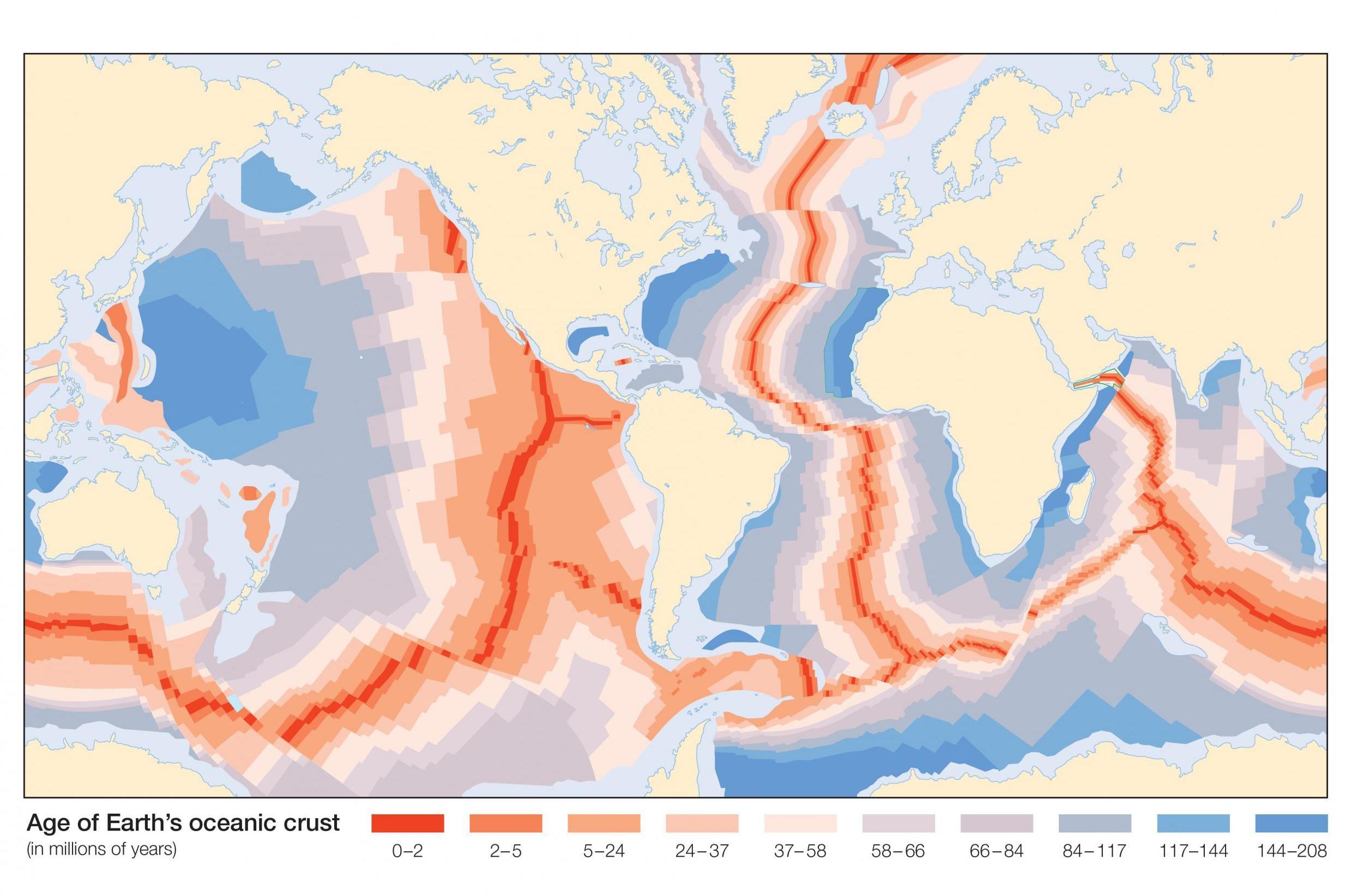Plate Tectonics and the Origins of Life on Earth
"If there wasn't a way of recycling material between mantle and crust [of the evolving Earth], all these elements that are crucial to life, like carbon, nitrogen, phosphorus and oxygen, would get tied up in rocks and stay there."
Aubrey Zerkle, geochemist, University of St.Andrews, Scotland
"Think about what drives evolution. It's isolation and competition. You need to break continents and continental shelves apart, and separate one ocean from another, for speciation to occur."
Robert Stern, geoscientist, University of Texas, Dallas
"The prevailing view is that Earth started to exhibit behaviors that look like plate tectonics 2.5 to 3 billion years ago."
Michael Brown, geologist, University of Maryland
 |
| A cross section of the Earth, showing the exterior crust, the molten mantle beneath it and the core at the center of the planet. Image credit: NASA/JPL-Université Paris Diderot – Institut de Physique du Globe de Paris |
Plate Tectonics is the supposition that the outer shell of Planet Earth is broken into pieces, or plates that glide over a belt of hot, weak rock; in some areas rising from the underlying mantle and in others plunging back into the mantle; a geological consruct that describes the structure and behavior of the Earth: mountains and ocean canyons, earthquakes and volcanoes, inclusive of the composition of the air we breathe sustaining life.
It was only in the mid-20th Century that the theory of "continental drift" became generally accepted when evidence was unearthed of a 'subterranean engine' directing continental deviations. It was at that time that geologists determined Earth's outer layer to be broken into eight or nine large pieces along with five or six smaller segments resulting in a mixture of relatively thin, dense oceanic plates riding low while thicker, lighter continental plates bobbed above.
 |
Melting rock from the underlying mantle rises up at large fissures on the ocean floor, steadily increasing the oceanic plates while at other fracture points in the crust, oceanic plates dive back inside or alternately, in the process of subducting become absorbed into the hot belly of the mantle.
Jun Korenaga, a geophysicist at Yale University and others of his colleagues contend that plate tectonics was initiated directly after the crust of the Earth solidified. "That is when the conditions would have been easiest for plate tectonics to get started", he asserts. Most of the water on Earth would at that point be on the surface, little having found its way into the mantle.
 |
| The Silfra fissure in Iceland forms part of the boundary between the North American and the Eurasian tectonic plates. The two plates drift about 2 centimeters farther apart every year. Photo: Charlie Jung |
Heat convecting up through the mantle, exerting a stronger force on dry rocks than on lubricated rocks occurred at the same time as surface water would ease the process whereby hot, twisting rocks beneath cracked the surface lid apart a process which Dr. Korenaga feels represents the key in starting the subduction engine in its mighty transformative action.
This theory is not, however, generally accepted by all geophysicists in the field, by any means. Basically, three camps exist, all sparring over when the entire movable plate system began; whether it is as ancient as the planet; roughly 4.5 billion years old; or perhaps merely one billion years or some other, younger, starting point?
The question is, basically, what was it that caused the shell to crack apart to begin with. And from there it follows that the second key question to be answered is how the recycling of the crust of the Earth then began. A link between plate tectonics and the evolution of complex life appears tantalizingly connected.
The hypothesis has been raised that continental collisions and crashing mountains could very well have unearthed crucial nutrients at specific moments of biological inventiveness in nature's great scheme of creation. A process that loosened the vital chemical ingredients, enabling them to ferment together in a stew creating the basic elements of primal lifeforms.

Robert Stern argues that plate tectonics, on the other hand, is a natural occurrence in Earth's evolution of a mere billion years in age, perhaps less; that Earth's first 3.5 billion years had a "single lid" serving as an outer shell, a crust riddled with volcanoes and mountains but no moving plates. And then there is the group of geologists who make do with a middle ground decoupling plate tectonics from the origins of life on Earth.
Scientists consider plate tectonics vital to the sustained evolution of primordial life where evidence of the earliest single-celled organisms date back over 3.6-billion years. As the theory goes, the activity of plate tectonics maintained a constant supply of water shuttling between mantle and crust instead of gradually evaporating from the surface.
A process that blocked dangerous buildup of greenhouse gases through subducting the excess carbon underground. The process disturbed mountains and pulverized rocks, loosening essential minerals and nutrients such as phosphorus, oxygen and nitrogen to be used in nature's laboratory petri dish production of life.
 |
Plate tectonics may have helped facilitate the development of life on Earth. Image credit: NASA.
|
Labels: Earth, Geology, Origins, Plate Tectonics

0 Comments:
Post a Comment
<< Home